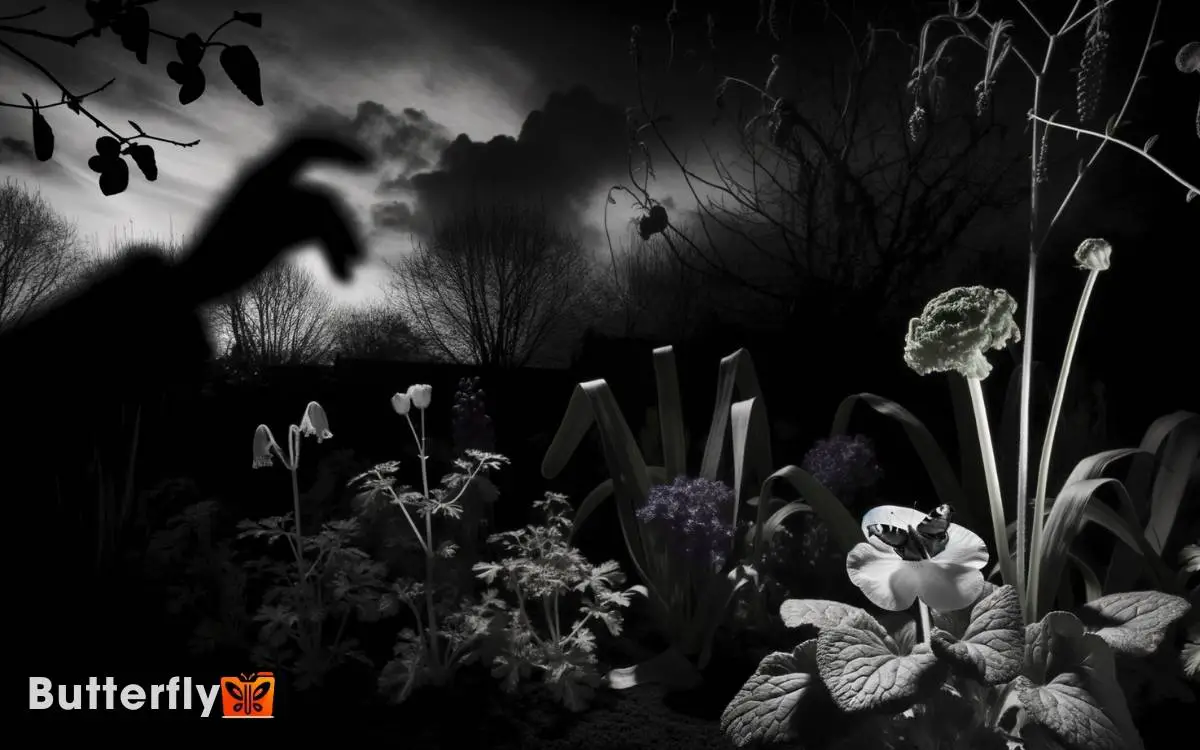How To Kill A Butterfly? Methods and Considerations!
To kill a butterfly humanely, begin by evaluating the necessity. Obtain a killing jar and ethyl acetate, making sure all tools, including tweezers and a soft brush, are sterilized.
Capture the butterfly gently with a soft net to prevent wing damage. Place it in the jar with ethyl acetate, which will euthanize it quickly.
Take into account ethical implications, legal permits, and the ecological impact, such as disruptions in pollination and biodiversity. Always explore alternative solutions like creating butterfly-friendly habitats.
Adhering to these steps guarantees a systematic approach while addressing conservation concerns, and there’s more to contemplate.

Key Takeaways
Ethical Considerations
Before considering how to kill a butterfly, you must first evaluate the ethical implications of taking a life, even that of an insect. Begin by appraising the necessity of the action. Does the butterfly pose a significant threat to research integrity or ecological balance?
Consider alternative methods such as relocation or non-lethal deterrents. Evaluate the butterfly’s role in pollination and its contribution to biodiversity. You should also review ethical guidelines in entomological research, making sure your actions align with best practices.
Utilize a systematic approach to minimize suffering, possibly employing anesthetic agents before euthanasia. By scrutinizing your motivations and methods, you can guarantee that your decision is both scientifically justified and ethically sound, fostering responsible innovation.
Legal Implications
After carefully evaluating the ethical considerations, you must also examine the legal implications of killing a butterfly, which can vary by jurisdiction and species protection status. Understanding these legal parameters is essential to avoid penalties and contribute to conservation efforts.
| Jurisdiction | Legal Status of Butterfly Killing |
|---|---|
| United States | Protected under the Endangered Species Act (ESA) |
| European Union | Subject to the EU Habitats Directive |
| Australia | Regulated by the Environment Protection and Biodiversity Conservation Act (EPBC) |
| Canada | Governed by the Species at Risk Act (SARA) |
In regions where legal protection is stringent, permits may be required for scientific research. Non-compliance can result in substantial fines or legal action. Hence, understanding and adhering to local laws is imperative for anyone considering such actions.
Necessary Tools
To effectively and humanely kill a butterfly, you’ll need specific tools designed for entomological use, such as a killing jar and ethyl acetate.
First, acquire a killing jar, which is a sealed container with a porous insert to hold ethyl acetate. This chemical acts as an anesthetic, guaranteeing the butterfly’s quick and humane death.
You’ll also need tweezers for precise handling and placing the butterfly into the jar. Additionally, prepare a soft brush to carefully transfer the specimen without damaging its delicate wings.
Make sure that all tools are sterilized to maintain specimen integrity. By employing these specialized tools, you can achieve an efficient, humane process while preserving the butterfly for further scientific study or display.
Humane Methods
You should employ gentle capture techniques to guarantee minimal stress to the butterfly.
Use a soft net to capture it and then release it in its natural habitat, away from human activity. This approach respects the ecological balance while addressing the need for humane methods.
Gentle Capture Techniques
A fine-mesh butterfly net allows you to gently capture the butterfly without causing harm to its delicate wings. First, approach the butterfly slowly to avoid startling it. Once in position, sweep the net swiftly but smoothly, guaranteeing the butterfly is caught in the mesh.
To safely transfer the butterfly from the net to a holding container, follow these steps:
- Gently invert the net over the container, allowing the butterfly to move naturally into it.
- Ensure minimal contact with the wings to prevent damage.
- Secure the container promptly to avoid escape.
This method prioritizes the butterfly’s well-being while facilitating capture.
Release in Natural Habitat
After successfully capturing the butterfly, make sure to release it in a suitable natural habitat to maintain ecological balance and promote its well-being. Gently open your hands or container in a calm, sheltered area with plenty of flowers to provide nectar. Avoid handling the butterfly excessively, as this can damage its delicate wings. Following safe butterfly release tips, ensure the surrounding environment is free from strong winds or predators to give the butterfly the best chance of survival. If you’re unsure how to release a butterfly properly, observe its behavior before letting it go to ensure it is ready to fly. Choose a time when the weather is warm and calm, as butterflies are more active in sunlight. By following these precautions, you can help support local butterfly populations and contribute to their conservation.
Select an environment with abundant nectar sources, such as flowering plants, to guarantee the butterfly’s nutritional needs. Verify that the habitat is free from pesticides and pollutants that could harm the butterfly.
Gently open the container in a shaded area to prevent disorientation due to sudden light exposure. Allow the butterfly to exit at its own pace, reducing stress and potential wing damage. Monitor the butterfly for a few moments to ensure successful acclimatization.
Impact on Ecosystem
Eliminating butterflies from an ecosystem disrupts pollination processes and diminishes biodiversity. Butterflies are key pollinators for numerous plant species, and their absence can lead to a decline in plant reproduction.
This, in turn, affects food webs and ecological interactions. You’ll notice a cascading effect, where the loss of butterfly species influences various trophic levels.
- Reduced Plant Reproduction: Many plants rely on butterflies for pollination, leading to fewer seeds and lower genetic diversity.
- Disrupted Food Webs: Predators that feed on butterflies, such as birds, experience a shortage of food.
- Habitat Degradation: Plants that depend on butterflies may decline, affecting the habitat structure and resources available for other organisms.
Understanding these impacts helps in grasping the intricate balance within ecosystems.
Alternative Solutions
Conservation efforts, such as creating butterfly-friendly habitats and reducing pesticide use, offer viable alternatives to killing butterflies.
You can establish nectar-rich gardens utilizing native flora, which will attract and sustain butterfly populations. Prioritize plants like milkweed, which serve as both a food source and breeding ground.
Additionally, minimize chemical applications by employing integrated pest management (IPM) techniques. IPM combines biological controls, such as introducing natural predators, with mechanical traps to manage pest populations effectively.
Promote ecological balance by fostering biodiversity, ensuring a stable environment for butterflies. Employing these strategies won’t only protect butterflies but also enhance overall ecosystem health.
Conclusion
In the grand tapestry of nature, each thread, like the butterfly, serves a purpose.
If you ever find yourself considering altering this delicate weave, remember that every action has repercussions.
While methods exist, it’s wiser to explore non-lethal options.
An ecosystem thrives on balance; disrupting it can cause unforeseen ripples.
Instead, appreciate the butterfly’s role, much like a well-tuned instrument in an orchestra, where every note contributes to the symphony of life.






